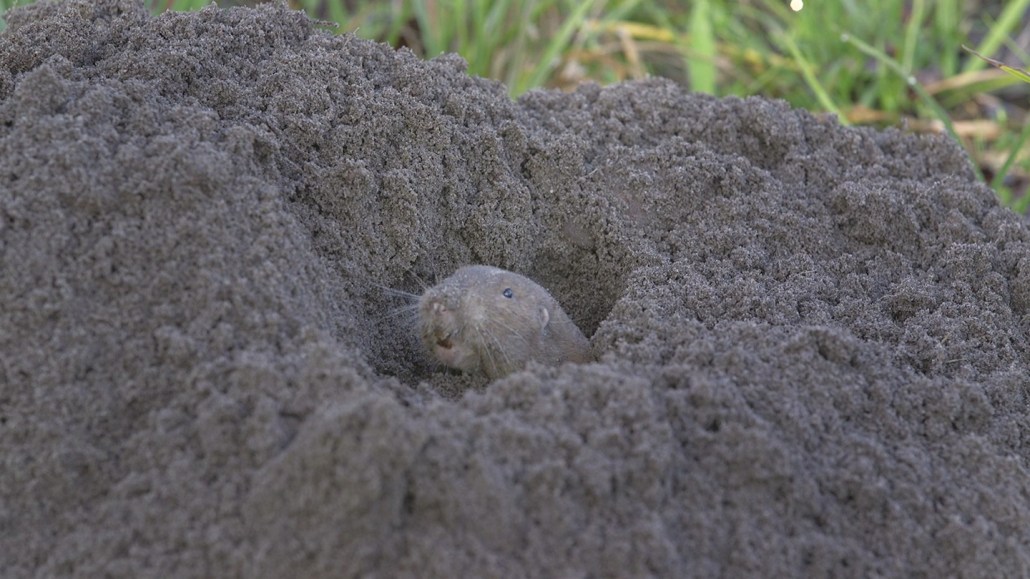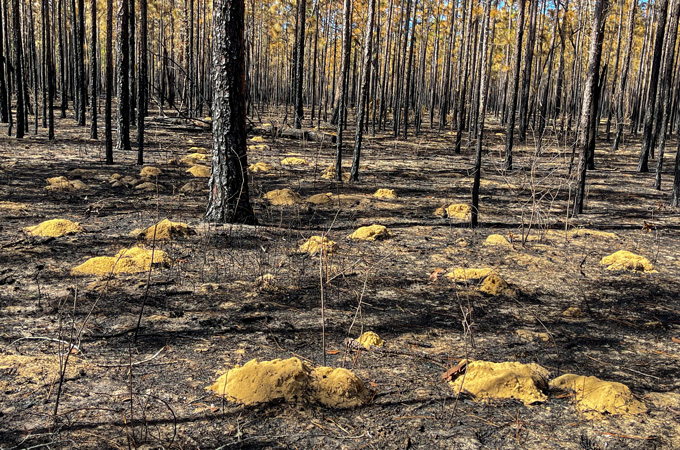
Southeastern pocket gophers expend a lot of energy digging tunnels. They might recoup some of that energy by “farming” roots in those tunnels, a controversial new study suggests.
Veronica Selden/Eurekalert (CC BY-SA)
- More than 2 years ago
Read another version of this article at Science News Explores
Pocket gophers certainly don’t qualify as card-carrying 4-H members, but the rodents might be farming roots in the open air of their moist, nutrient-rich tunnels.
The gophers subsist mostly on roots encountered in the tunnels that the rodents excavate. But the local terrain doesn’t always provide enough roots to sustain gophers, two researchers report in the July 11 Current Biology. To make up the deficit, the gophers practice a simple type of agriculture by creating conditions that promote more root growth, suggest ecologist Jack Putz of the University of Florida in Gainesville and his former zoology undergraduate student Veronica Selden.
But some scientists think it’s a stretch to call the rodents’ activity farming. Gophers aren’t actively working the soil, these researchers say, but inadvertently altering the environment as the rodents eat and poop their way around — much like all animals do.
Tunnel digging takes a lot of energy — up to 3,400 times as much as walking along the surface for gophers. To see how the critters were getting all this energy, Selden and Putz in 2021 began investigating the tunnels of southeastern pocket gophers (Geomys pinetis) in an area being restored to longleaf pine savanna in Florida that Putz partially owns.
The pair took root samples from soil adjacent to 12 gopher tunnels and extrapolated how much root mass a gopher would encounter as it excavated a meter of tunnel. Then the researchers calculated the amount of energy that those roots would provide.
“We were able to compare energy cost versus gain, and found that on average there is a deficit, with about half the cost of digging being unaccounted for,” Selden says.
Upon examining some tunnels, Selden and Putz saw gopher feces spread through the interior along with signs of little bites taken out of roots and churning of the soil.
The gophers, the researchers conclude, provide conditions that favor root growth by spreading their own waste as fertilizer, aerating the soil and repeatedly nibbling on roots to encourage new sprouting.

“All of these activities encourage root growth, and once the roots grow into the tunnels, the gophers crop the roots,” Selden says. She and Putz say that this amounts to a rudimentary form of farming. If so, gophers would be the first nonhuman mammals to be recognized as farmers, Putz says. Other organisms, such as some insects, also farm food and started doing so much earlier than humans (SN: 4/23/20).
But the study has its skeptics. “I don’t really think you can call it farming per the human definition. All herbivores eat plants, and everybody poops,” says J.T. Pynne, a wildlife biologist at the Georgia Wildlife Federation in Covington who studies southeastern pocket gophers. So the root nibbling and tunnel feces might not be signs of agriculture, just gophers doing what all animals do.
Evolutionary biologist Ulrich Mueller agrees. “If we accept the tenuous evidence presented in the Selden article as evidence for farming … then most mammals and most birds are farmers because each of them accidentally have also some beneficial effects on some plants that these mammals or birds also feed on,” he says.
Not only that, but the study is also dangerous, says Mueller, of the University of Texas at Austin. The public will see through “the shallowness of the data,” he says, and will conclude that science is “just a bunch of storytelling, eroding general trust in science.”
For her part, Selden says she understands that because gophers don’t plant their crops, not everyone is comfortable calling them farmers. Still, she argues that “what qualifies the gophers as farmers and sets them apart from, say, cattle, which incidentally fertilize the grass they eat with their wastes, is that gophers cultivate and maintain this ideal environment for roots to grow into.”
At the very least, Putz says, he hopes their research makes people kinder toward the rodents. “If you go to the web and put in ‘pocket gopher,’ you’ll see more ways to kill them than you can count.”





